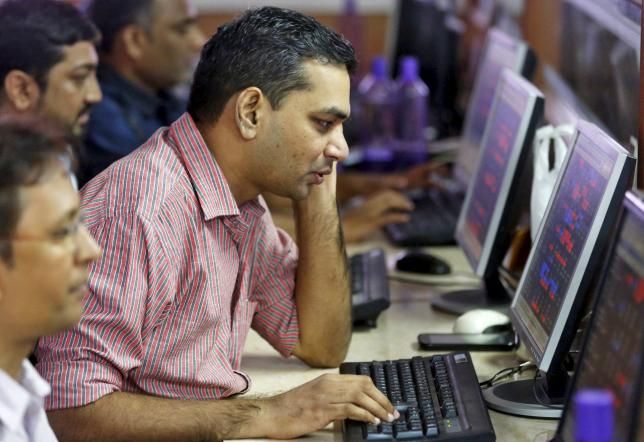
Market participants are eyeing the coming outcomes of the US Federal Reserve's meeting and Britain's vote on whether to leave ('Brexit') the European Union.
Jyotivardhan Jaipuria, founder and managing director, Veda Investment Managers, tells Puneet Wadhwa any increase in the interest rate by the US central bank will be measured and provide a pullback that will give investors a better entry point.
Excerpts:
Do emerging markets, including India, have anything to worry about in case the US Federal Reserve hikes rates and the upcoming Brexit vote?
The recent US jobs report has eased fears of a hike in the Fed meeting.
However, chair Janet Yellen has indicated a hike looks inevitable this year.
This will reverse the dollar's weakening that has driven the global equity market rally since February.
Hence, a correction in markets globally is likely due to the Fed hike, and emerging markets, including India, will be no exception.
At the same time, we think the Fed hike will be measured and, hence, will provide a pullback that will give investors a better entry point. Brexit is a bigger threat for the market.
An actual Brexit could lead to a sharp correction, though the market is still treating it as a low probability event.
Indian markets seem to be building into many positives right now. How sharp can the correction be, if any?
We think the bigger threat to the markets is a global correction, rather than something led by India-specific factors.
Within India, a poor monsoon could raise fears of a rise in inflation, especially at a time when global commodity prices are rallying.
I think with the (goods and services tax) GST, it is now getting to a question of 'when' rather than 'if'.
So, even if GST does not get passed in the (coming) session (of Parliament), the market expectation will be that it gets done in the next one.
What is your outlook on key rates and the rupee trajectory in the backdrop of the recent monetary policy statement?
The recent monetary policy was in line with expectations. We think the bulk of the rates cuts by Reserve Bank of India is behind us.
We expect one more 25 basis point rate cut in this calendar year if the global events play out well and we have good monsoons.
But given their inflation target of five per cent by March 2017, we think the space for an aggressive rate cut is limited.
The bigger area to watch for is the transmission of rate cuts to the borrower.
There is greater space here and that is where bank recap and liquidity measures by the RBI will be a focus.
On the rupee, we would be looking at a small depreciation as the US dollar strengthens globally.
What is your analysis of the March quarter results?
These were a positive surprise. After many quarters, we saw the number of companies beating analyst estimates at nearly 40 per cent exceed those missing the estimates (35 per cent).
The aggregate numbers, of course, disappointed due to the high provisioning (for stressed loans) at banks.
But, the net profit for Sensex companies (ex-banks) grew at 15 per cent.
There is a greater comfort to our expectation of a 12-14 per cent earnings growth in FY17, the best in five years.
Which sectors are you overweight and underweight on?
We are overweight the domestic consumer plays, both in rural and urban consumption.
We especially like automobiles and rural-based stocks like agro chemicals.
We also like select stocks in the roads, railways and defence spaces. We are underweight on telecom and the materials sector.
Is the low commodity price era over for now? What is the outlook for capital goods, automobile and metal stocks in this backdrop?
It is important to put this in perspective.
Commodity prices have seen a sharp drop over 18 months and rallied from the lows.
But, they are still significantly lower than 18 months ago.
So, the super-cycle in commodities is clearly over and average prices over the next five years will be lower than they were over the past five years.
The investment part of the Chinese growth story is in a structural slowdown. We would, therefore, not be long-term buyers of metal stocks, though we play cyclical rallies, led by beaten-down valuations and imposition of MIP (minimum import price).
While commodity prices do help margins of sectors like automobiles and capital goods, demand and volume are more critical stock price drivers.
We are positive on automobiles, as we see a demand recovery led by the pay commission, a better monsoon, leading to revival in rural demand, and falling interest rates.
We are, however, cautious on the capital goods sector, especially in power, since the revival in investment demand is still 12-18 months away.
The markets seem to be liking niche plays like Thyrocare, Dr Lal PathLabs, Ujjivan Financial Services and Equitas Holdings. What is your view for these players in terms of earnings growth potential?
The health care sector, as well as the micro finance companies going into small banks, are both interesting spaces from a long-term perspective and will show strong earnings growth.
Some companies in the health care sector are not cheap and will need to execute perfectly to sustain valuations.
Micro finance companies are great long-term plays, but face challenges in the near term as they transform to a small bank.
These include the costs of building a liability franchise and, of course, providing for CRR (cash reserve ratio) and SLR (statutory liquidity ratio).
That apart, it would entail a change in the culture of the organisation as they evolve into a multi-speciality finance entity.
How much headroom do you see in monsoon and consumption related plays from here on given the run-up we have seen over the past few months?
There are three factors that will help a revival in rural demand. Firstly, global commodity prices are moving up and this helps around 30-50% of rural income.
Secondly, a good monsoon after two years will help better agriculture growth in volumes.
Lastly, the Government has provided additional money this year in the budget for the rural sector.
The MSP price increases this year are the highest in 3 years and this will also be a minor positive.
This will provide a significant improvement to earnings of the rural plays and we are still positive on these stocks.
Our preferred plays are the two- wheeler companies, the tractor companies and the agro-chemical companies.
What is your view on the telecom sector in the backdrop of earnings potential, talk of net neutrality and the impending launch of Reliance Jio? Do any stocks offer a good entry point now from a 12-24 month horizon?
We are very positive on the demand for data but we think margin pressure will weigh on stocks near-term.
We think the launch of Reliance Jio will increase the competitive intensity of the sector and will shift management focus from margins to maintaining market share.
We think this would pressure stock prices. We are underweight the sector.
The image is used for representational purpose only. Photograph: Reuters












 © 2025
© 2025